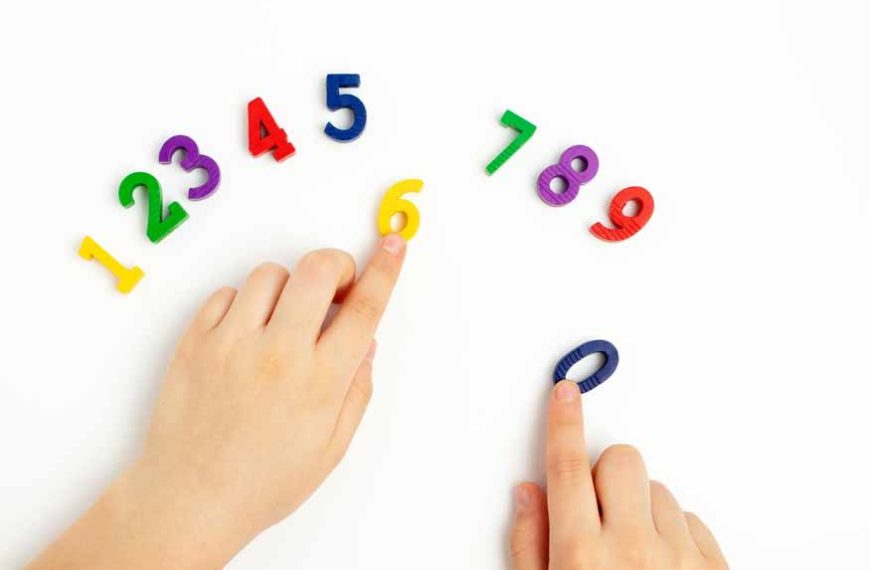As your preschooler grows, it is important to equip him/her with logical and mathematical skills. Whether it’s basic counting, simple calculations like addition and subtraction, or understanding the basics of numbers can help your child go a long way. Having the knowledge of mathematics can aid children in critical thinking and problem-solving along with cognitive development. One of the best ways to get your preschooler to grasp the basics of mathematics and familiarise them with numbers is by teaching them backwards counting.
What is Backwards Counting?
Backwards counting is when one counts down numbers starting from a higher number to a lower number by decreasing a number each time. For example, backward counting from five to one starts by counting at five and decreasing a number each time. So, 4, 3, 2, 1.
What are the Benefits of Backward Counting for Preschoolers?
- It helps children understand number recognition, namely understanding the sequence of numbers.
- It improves their counting skills as counting backwards can be a value-adding skill.
- It aids them in simple mathematical solutions like subtraction.
- It builds a foundation and lays the groundwork for them to tackle more complicated mathematical tasks.
- When turned into an interactive activity, it becomes a fun and entertaining game keeping both parent and child engaged.
How to Teach Backward Counting
You can start teaching backward counting activities to preschoolers when they are 3-5. Here are a few interesting ways to teach your kids backward counting:
- Club it with meal times
- Fitness time
- Hopscotch
- Hide and Seek
- Number Songs
- Building Blocks
- Pass the Ball with a Countdown
- Treasure Hunt
- Long to Short Food Items
This will work especially well with meals or food items that your child is picky about. For instance, if you want your child to finish his plate of greens, why don’t you incorporate some backward counting into it. Tell him that there are only 10 spoons left, when he finishes one spoon, you can reduce it to 9 and so on. Not only will this practice ensure healthy meal times, it will also help him understand reverse counting.
If your child loves to bust into a move or two or enjoys following the steps of Zumba instructors, you can teach him how to do backwards counting with each step. Start with a low number like five. Repeat each step in the routine five times, counting down from five to one. This helps the child remember the steps better, while also remembering to count backwards.
Turn your everyday hopscotch patch into a numerical path. Every time your child takes a step ask them to say out loud the number they step on. Start with one and count to 10. When your child reaches 10, ask them to count backwards. Having a visual aid such as this one will help the younger ones remember numbers better.
If your child hasn’t mastered counting till 10, you can help them out by turning it into a game of hide and seek for them. You’ll need 20 sheets of paper and a room for the child to count in while you hide. Place numbers one to 10 on a wall and ask your child to count the numbers in order. When he’s done, ask him to take a look at another wall, where you will place numbers 10 to one. When your child is done counting both in order and reverse, he can come look for you.
It’s often noted that little children can grasp and remember things quicker and more vividly if there were an element of music or song. It stimulates many senses for them and this is why they can quickly memorise nursery rhymes. Some popular songs you can try are, “ Five Cheeky Monkeys Jumping on the Bed” and “Five Little Ducks Went Out One Day”.
Whether it’s alphabets or numbers, building blocks is a fun and engaging way to improve your child’s cognitive skills. Show your child how to count backwards with the help of building blocks. Start by doing it the right way. Break the tower down and get your child excited in trying it out the other way. Help your child whenever you need to but give him the space and time to achieve the feat on his own.
One of the best ways to get children to count is by engaging in game play. Passing the ball is one of the easiest backward counting activities to try with your kids. Gather all your family members or as many people as you can and form a circle. Pass the ball around as each person counts a number from one to 10. When that cycle is done, reverse the order of numbers.
Try a treasure hunt but with a twist. Hide 10 candies or small toys, or other stuff your child loves and enjoys. Turn the backwards counting game into a reward system. Give your child easy clues to complete one task to get to the other. Start the count backwards as your child uncovers and receives the “treasure” at every mode.
A great way to teach backwards counting and to help your child learn about new food items is to show them. Starting from tallest to shortest, place fruits or vegetables items in order of descending size. Start with only five vegetables or fruits first. You can start with a radish, then a carrot, then ladies finger, then a potato, and finally a tomato. This helps the child understand the depth of size and also how to count backwards.
Counting backwards helps children in many ways. It makes them independent as they tackle everyday life skills, it helps improve their logical reasoning, and is also an early way to teach them financial literacy. At EuroKids, we discover teaching methods such as backwards counting and more. We place the utmost importance on early childhood education and we follow a 360-degree proven franchise model to ensure that each child gets the attention he/she deserves and that no child is left behind. Come, discover a myriad of possibilities with our educators!















